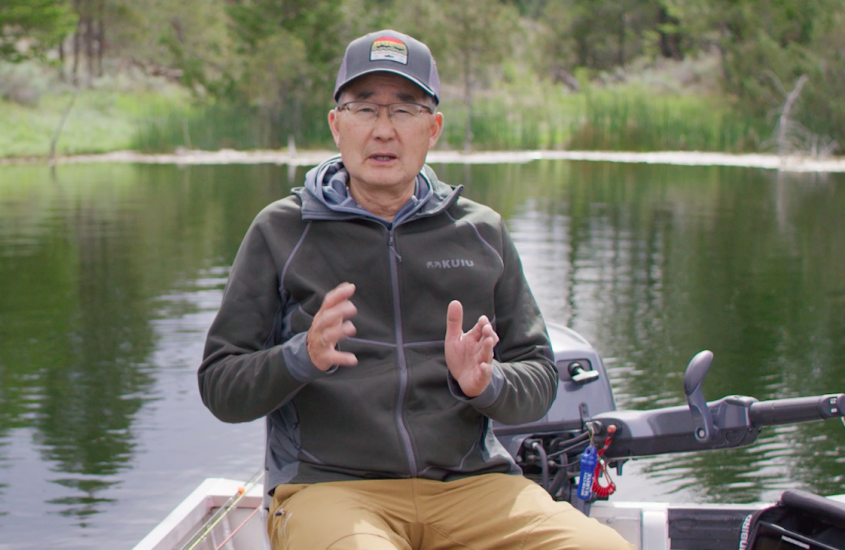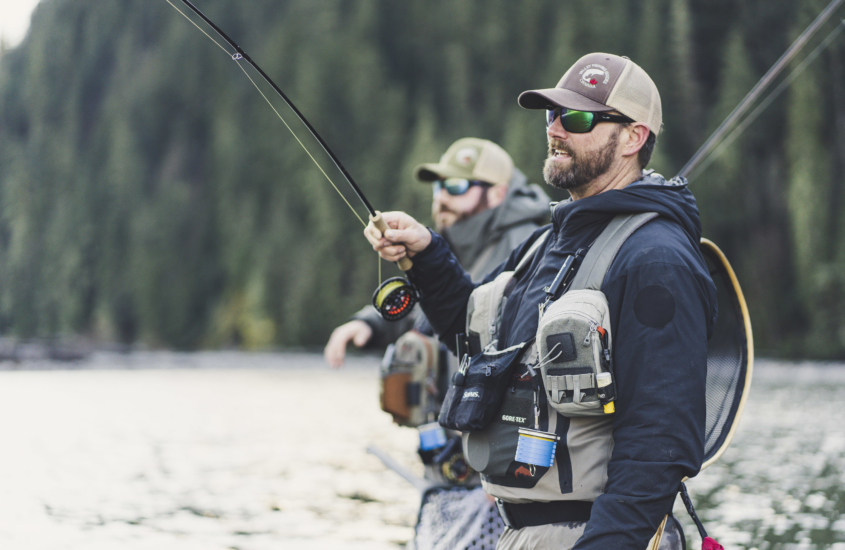As we start to think about all the fly fishing adventures we’ll have on the lakes once they thaw out, it’s important to consider the wide range of fly lines that are available. With at least 15 different types to choose from, it can be overwhelming for someone new to this type of fishing. But don’t worry, we’ve got you covered with our Stillwater Essentials Fly Fishing Masterclass with Phil Rowley. In this class, Phil will walk you through all of the different fly lines and help you determine which ones are best suited for your needs. Let’s take a closer look at the different types of fly lines and how they can be used.
Floating Lines
Floating lines are the most basic and versatile type of fly line. They are designed to float on the surface of the water and are useful for a wide range of fishing situations. For casting to rising fish or for species that feed on adult insects or emergers, a floating line with a delicate taper is a good choice. These lines allow for accurate and subtle presentations. For casting larger flies or achieving longer casts, a floating line with a slightly heavier taper can be useful.
In addition to these general-purpose floating lines, there are also lines specifically designed for casting long leaders and complex indicator rigs. These lines often have a longer head and a more gradual taper, which can make them more efficient for casting heavier rigs and turning over longer leaders. If you’re the type of angler who loves to tinker with different rig setups, these lines are definitely worth considering.
Mid Tip Line
A mid tip line is another option for fly fishing on a lake. These lines are essentially a floating main line with either a three or six-foot clear, intermediate, or hover tip section. The intermediate or hover tip sinks at a slow rate, typically around one inch per second, and can be useful for fishing in the top few feet of the water column. The clear tip section, on the other hand, allows for a more subtle presentation, as it is less visible to the fish. These lines can be a great option for those days when the fish are finicky and you need to be extra stealthy.
Hover Lines
Hover lines are similar to mid tips, but they sink at a slightly faster rate, typically around one inch per second. These lines can be useful for fishing just below the surface or in the top few feet of the water column. If you’re targeting fish that are feeding near the surface, a hover line might be just what you need.
Clear Intermediate Lines
Clear intermediate lines are another option for fly fishing on a lake. As the name suggests, these lines are clear, which can be an advantage in certain situations where stealth is important. They sink at a moderate rate, typically between one and a half to two inches per second, and can be useful for fishing in the middle of the water column. These lines can be great for those days when the fish are a little deeper, but you still want to maintain a subtle presentation.
Full sinking lines
Full sinking lines are lines that sink at a faster rate, typically three inches per second or more. These lines can be useful for fishing in deeper water or for reaching fish that are holding near the bottom. Full sinking lines are available in a range of densities, with sink rates ranging from three inches per second to seven inches per second or more. If you’re targeting fish that are hanging out in the depths, a full sinking line is a must-have in your fly fishing arsenal.
Sweep lines
Sweep lines are another option for fly fishing on a lake. These lines are designed with varying densities along their length, with the intention of inducing the line to sweep through the water. For example, a sweep line might have a front section with a sink rate of one and a half inches per second, a midsection with a sink rate of four inches per second, and a rear section with a sink rate of three inches per second. These lines can be useful for fishing vertically, as the varying sink rates allow the fly to be fished at different depths. If you’re the type of angler who loves to fish a fly slowly through the water column, a sweep line might be just what you need.
In addition to these lines that are specifically designed for fly fishing on lakes, there are also other types of lines that can be used in this context. For example, some lines that are not necessarily designed for stillwater fishing can still be effective on a lake, depending on the situation. Don’t be afraid to experiment and see what works best for you.
Choosing the Right Fly Line for Your Rod
It’s worth noting that the type of fly line you choose can depend on the type of rod you’re using. For example, a slower action rod may be better suited to a line with a longer head and more gradual taper, while a faster action rod may be better suited to a line with a shorter head and more abrupt taper. Experimenting with different combinations of rods and lines can help you find the setup that works best for you.
Tips for Success
With so many options available, it can be overwhelming for someone new to fly fishing on lakes. However, with a little bit of knowledge and experimentation, you can determine which lines work best for your specific needs. As a starting point, consider carrying a floating line for casting long leaders and indicator rigs, a clear intermediate line that sinks at about two inches per second, and a fast sinking line that sinks between three and five inches per second. With these three types of lines in your arsenal, you’ll be well equipped to tackle a variety of fly fishing situations on a lake.
Don’t be afraid to experiment with different combinations of rods and lines to find what works best for you. With a little bit of knowledge and practice, you’ll be well on your way to becoming a proficient fly fisherman on a lake. And who knows, you might just find that fly fishing on a lake becomes your new favorite winter activity!
Fly fishing on a lake can be a great way to enjoy the colder months and get outside. With the wide variety of fly lines available, there is no shortage of options for tackling different fishing situations. By carrying a few different types of lines, you can be prepared for a variety of conditions and increase your chances of success on the water. Happy fishing!













